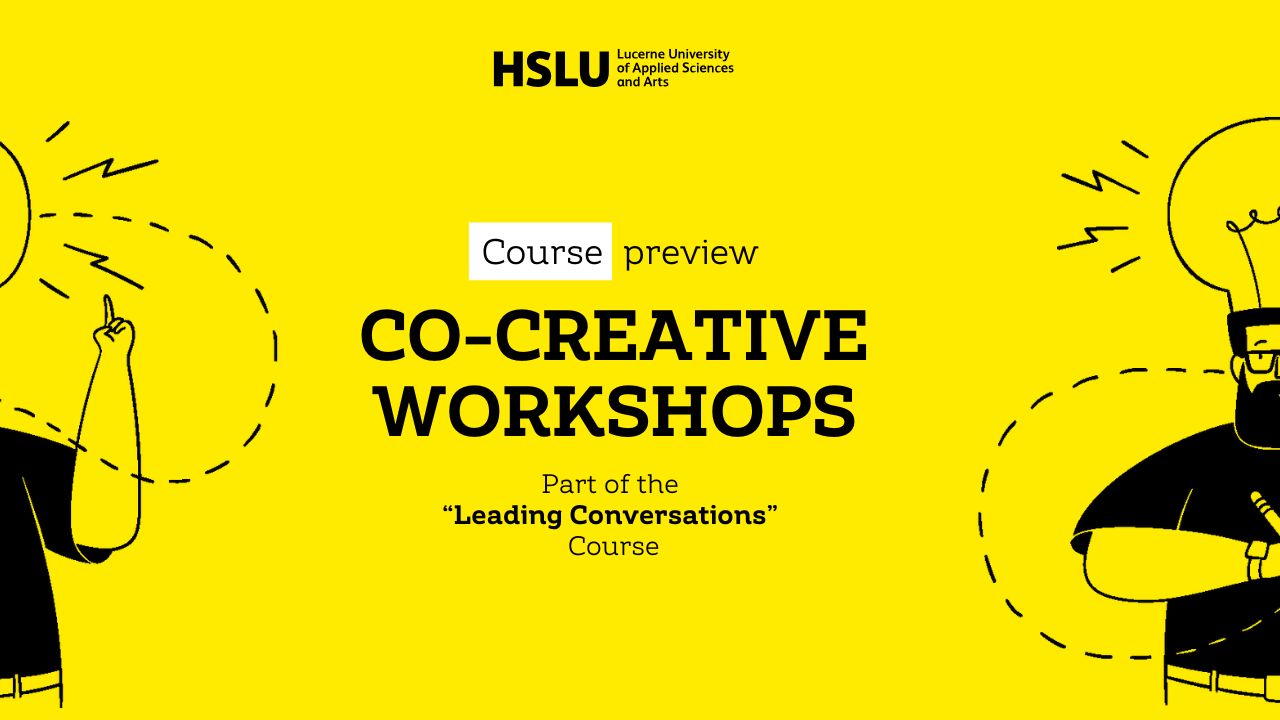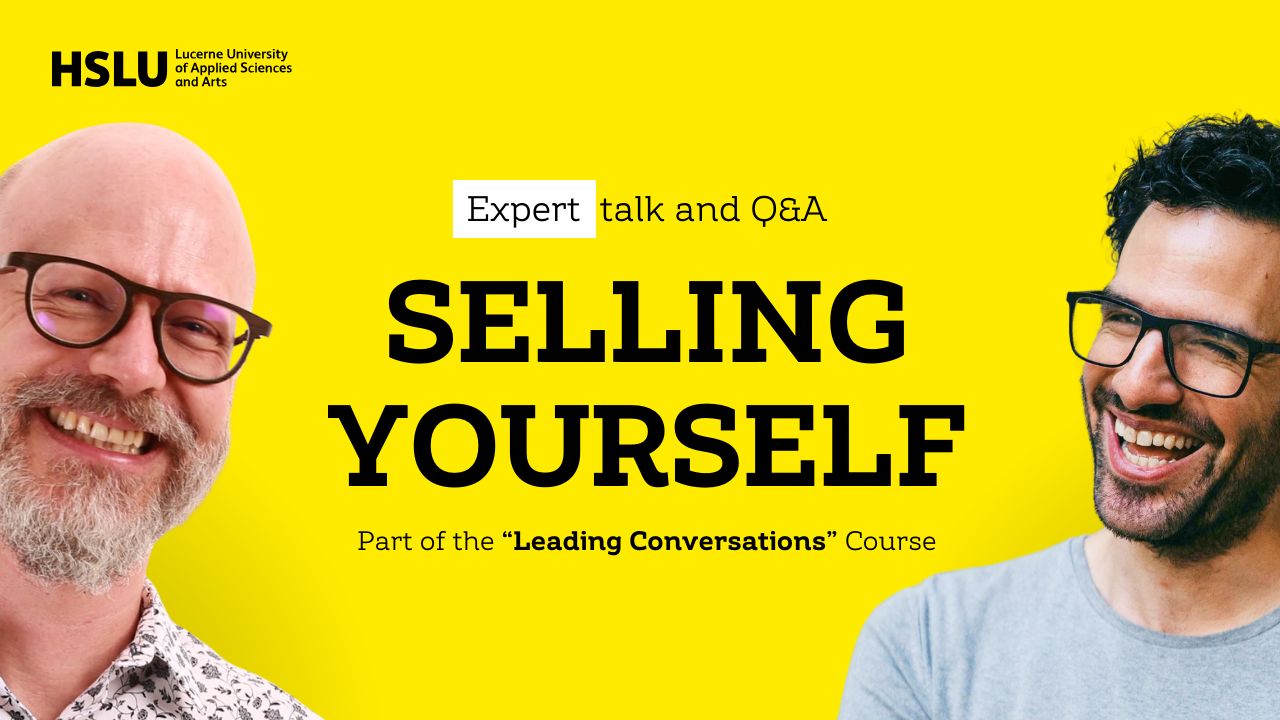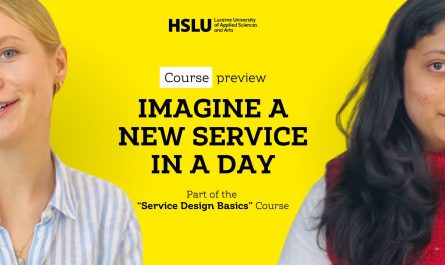That’s the question that the first-year Service Design practitioners of the Master Service Design of the HSLU, Lucerne University of Applied Sciences and Arts, explored today. This exploration is part of the series on « Leading Conversations ».
To do this, the students followed a « Learning by teaching » approach: shared learnings from reading material, shared personal tips from experience and practice, and all of it through practical exercises following the following questions:
- How do you prepare a workshop?
- What low-fidelity prototyping methods can you use to run a co-creative workshop?
- How do you make a report for a co-creative workshop?
Below you’ll find all the details about this approach, will get access to the reading material used, and even get the slide decks that the learners created for their « learning by teaching » moments.
The « Learning by teaching » format
Instead of being a classical class where the « teacher » is the only one sharing, students read different sources of material and then did three learning loops that look like this:
- 15 minutes presentation: A group of students presents to the whole class what they learned from the reading material.
- Personal tips round: each Service Design practitioner, be it a learner or the facilitator, shares his tips based on personal experience for that specific topic.
- 30 minutes practice: in smaller groups, the learners practice what was taught and shared in a practical exercise.
- Debriefing: each Service Design practitioner shares what he has learned from the activity.
This format is pretty near to what happens in the flipped classroom model, with the difference that the reading and exploration of material is done during the class time.
The slide deck used
You can see below the slide deck that was used this day of learning by teaching.
How do you prepare a workshop?
Learning by teaching
One group of Service Design practitioners explored the question « How do you prepare a workshop? ». Here is the presentation they shared after synthesising what they learned from the reading material:
The reading material
Here you’ll find links to the reading material that the group used to prepare this session:
Personal tips
Here are a few additional tips that the Service Design practitioners following in the class shared on this topic:
- Be a good host and come early.
- The location sets the tone and can create a safer space.
- Don’t reveal too much at the start to not bias people.
- Set the expectations about the workshop results.
- Prepare well, then be flexible during the session.
- Give control to the participants.
- Make sure that everyone shares something.
What low-fi prototyping methods can you use to run a co-creative workshop?
Learning by teaching
One group of Service Design practitioners explored the question « What low-fi prototyping methods can you use to run a co-creative workshop? ». Here is the presentation they shared after synthesising what they learned from the reading material:
The reading material
Here you’ll find links to the reading material that the group used to prepare this session:
Personal tips
Here are a few additional tips that the Service Design practitioners following in the class shared on this topic:
- Use simple technology like Lego Robotics or Arduino.
- Low-fidelity doesn’t mean no technology.
- Use video games like Sim4 to simulate elements.
- You don’t always need to start from scratch, you can ask people to improve / redesign existing services or products.
- You can pilot-test a workshop or a co-creation session with friends before doing it for real.
- Through making and building together slowly, people open up.
- Role play and clear rules work well for introverts.
How do you make a report for a co-creative workshop?
Learning by teaching
One group of Service Design practitioners explored the question « How do you make a report for a co-creative workshop? ». Here is the presentation they shared after synthesising what they learned from the reading material:
The reading material
Here you’ll find links to the reading material that the group used to prepare this session:
Personal tips
Here are a few additional tips that the Service Design practitioners following in the class shared on this topic:
- Start with the report during the workshop.
- Making the report is the moment when you realise if you achieved the goal of the workshop or not.
- Use simple and clear language and assume it will be read by people without context.
- You can do multiple reports instead of a big one: a small summary, one that contains all the results and methodology, and even personal reflections.
- You can record and transcribe remote meetings or workshops automatically (make sure people speak only one language and no dialect). You can use Descript or a similar tool to quickly edit those recordings.
Why we are sharing these resources
We’re sharing all the resources that we used to run this one-day workshop so that it can:
- Help future students: by getting a sense of what happens in the program before joining it.
- Help other educators: by sharing how in-the-behind-the-scenes such workshops are designed and inspire them for their own approach in teaching Service Design
Licence
The original content shared here is licensed under CC BY-NC-SA 4.0. This means you’re allowed to:
- Share it, adapt it, and make it your own
- As long as you mention the original authors, share it under the same license, and don’t use it in a commercial setting




Brilliant content as always, thank you so much for sharing.
Thanks for the encouraging words 💛